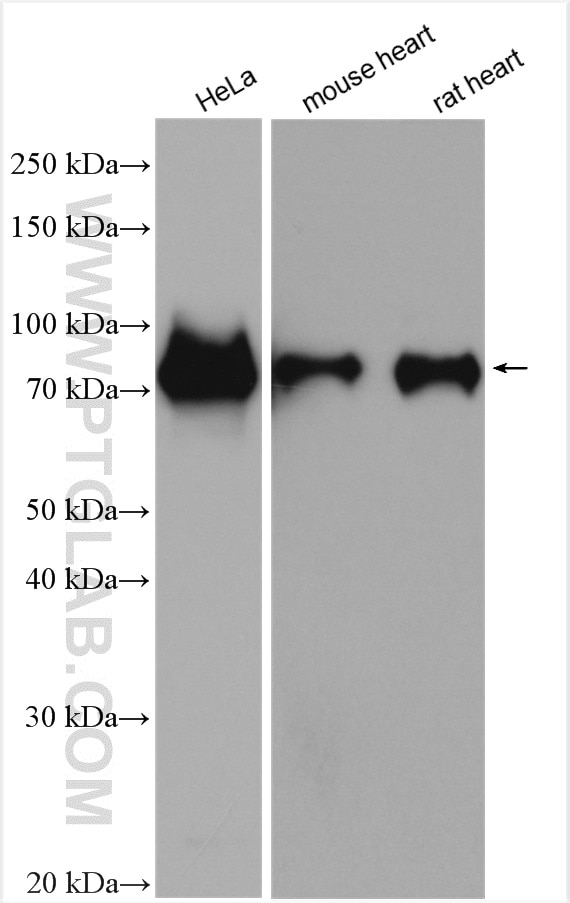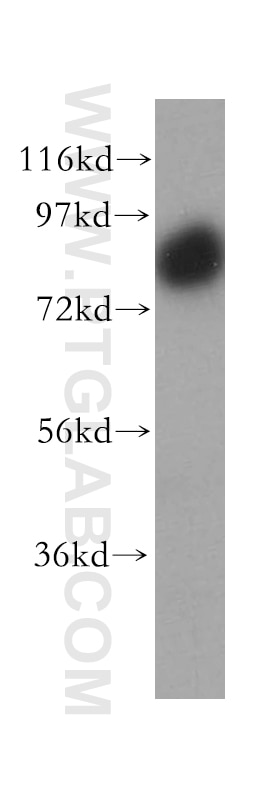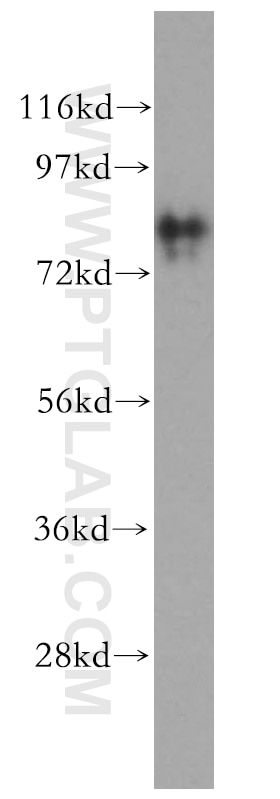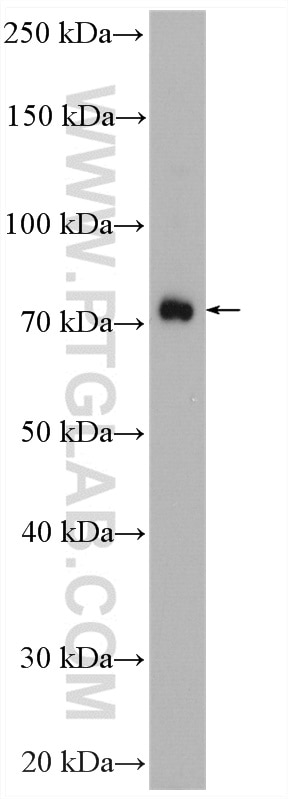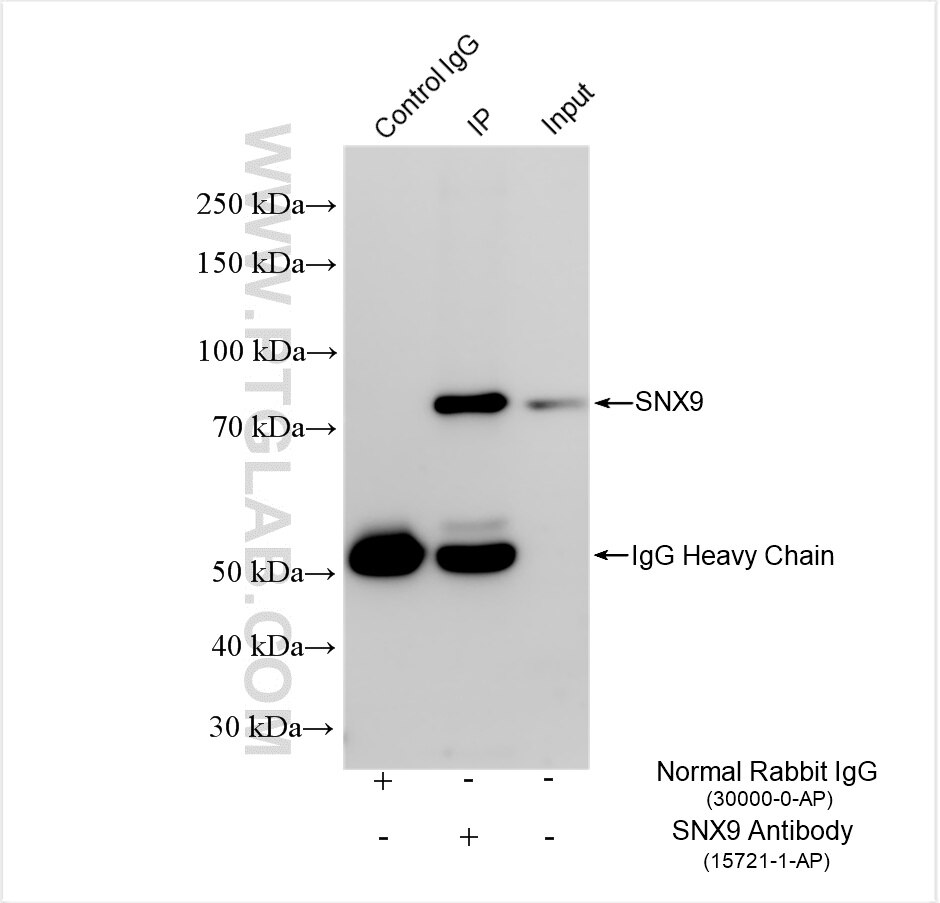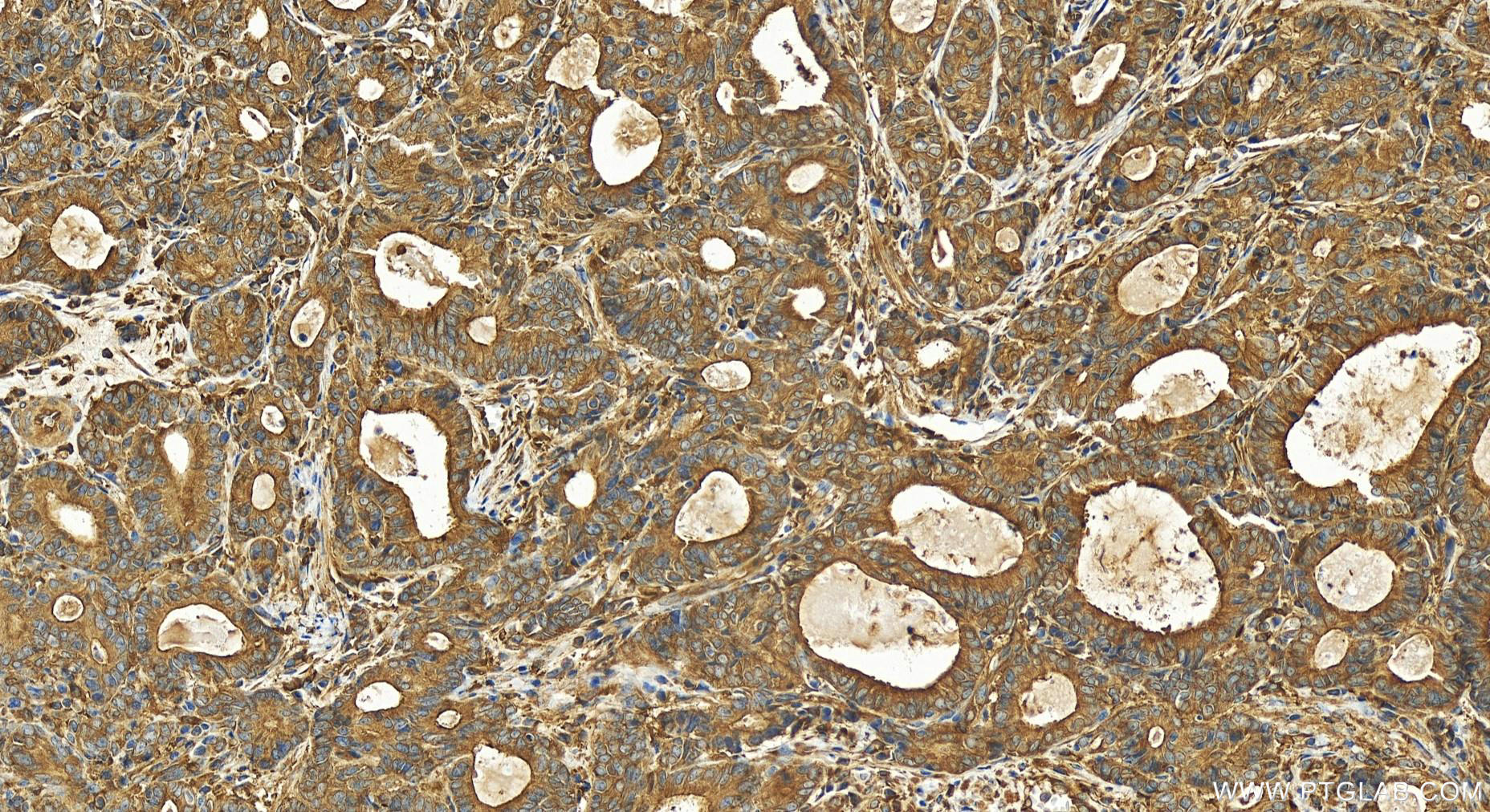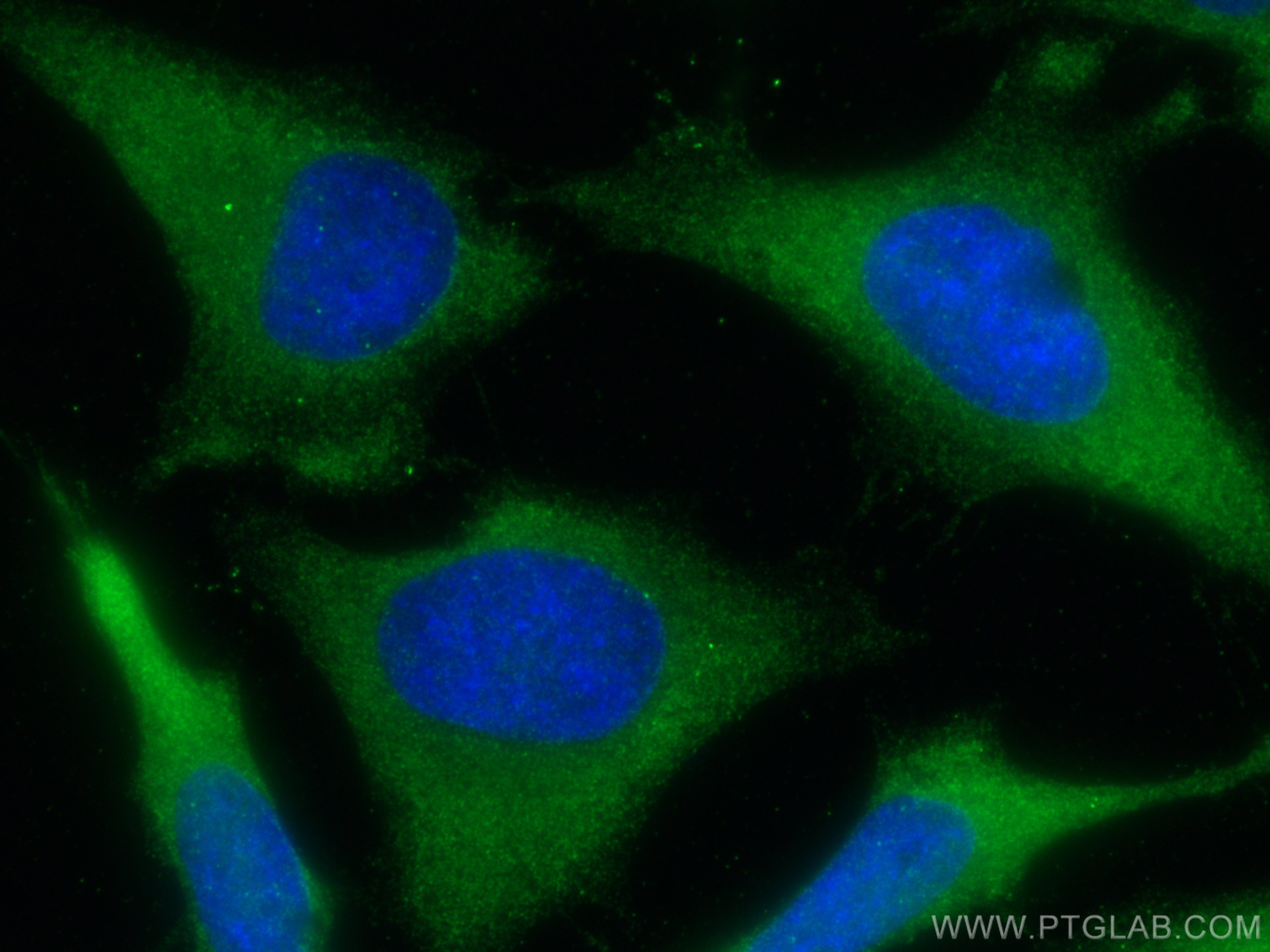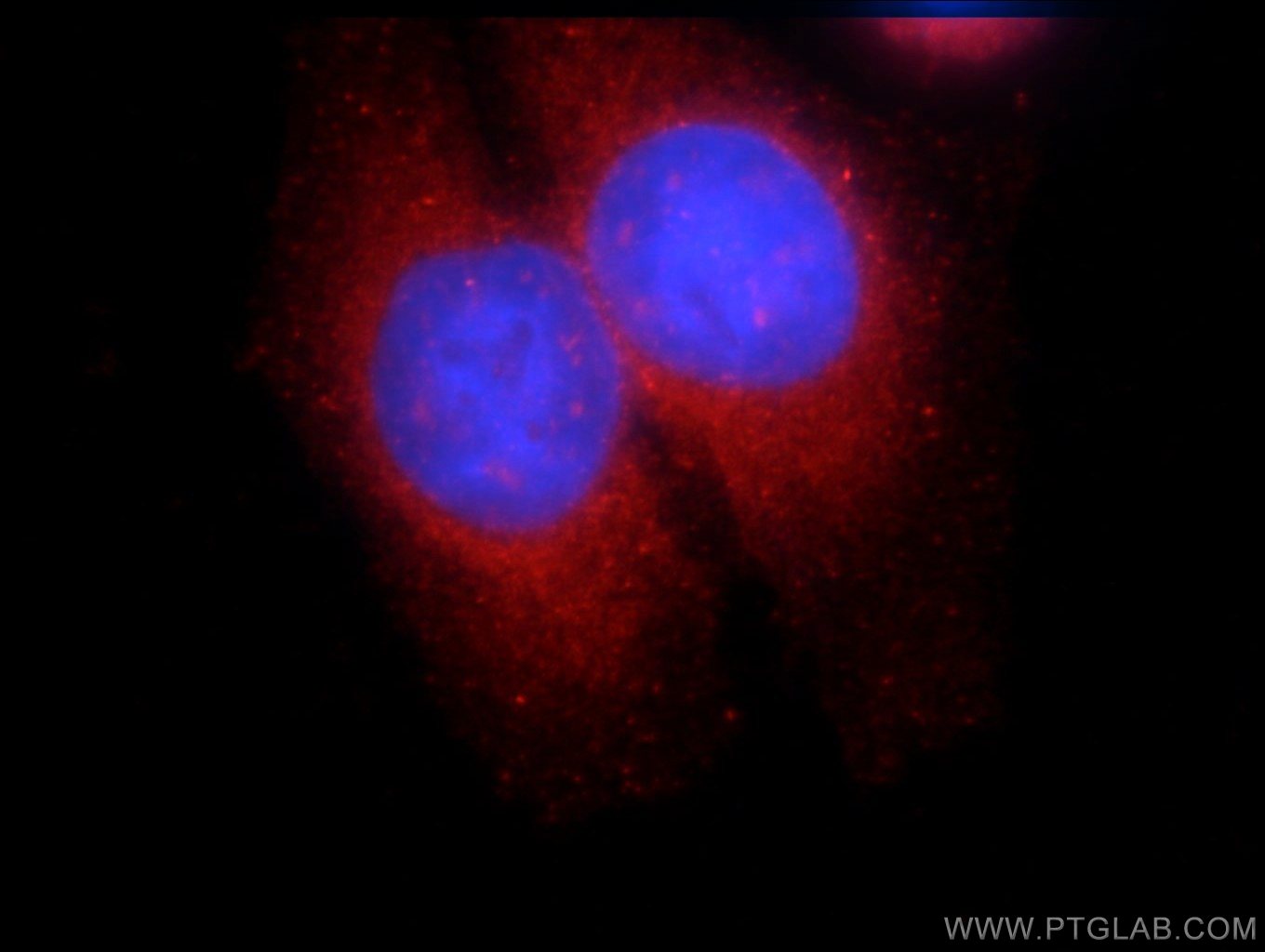- Featured Product
- KD/KO Validated
SNX9 Polyklonaler Antikörper
SNX9 Polyklonal Antikörper für WB, IHC, IF/ICC, IP, ELISA
Wirt / Isotyp
Kaninchen / IgG
Getestete Reaktivität
human, Maus, Ratte und mehr (1)
Anwendung
WB, IHC, IF/ICC, IP, ELISA
Konjugation
Unkonjugiert
Kat-Nr. : 15721-1-AP
Synonyme
Geprüfte Anwendungen
| Erfolgreiche Detektion in WB | HeLa-Zellen, humanes Herzgewebe, Mausherzgewebe, Maus-Skelettmuskelgewebe, Rattenherzgewebe |
| Erfolgreiche IP | Mausherzgewebe |
| Erfolgreiche Detektion in IHC | humanes Magenkrebsgewebe Hinweis: Antigendemaskierung mit TE-Puffer pH 9,0 empfohlen. (*) Wahlweise kann die Antigendemaskierung auch mit Citratpuffer pH 6,0 erfolgen. |
| Erfolgreiche Detektion in IF/ICC | HeLa-Zellen |
Empfohlene Verdünnung
| Anwendung | Verdünnung |
|---|---|
| Western Blot (WB) | WB : 1:1000-1:8000 |
| Immunpräzipitation (IP) | IP : 0.5-4.0 ug for 1.0-3.0 mg of total protein lysate |
| Immunhistochemie (IHC) | IHC : 1:200-1:800 |
| Immunfluoreszenz (IF)/ICC | IF/ICC : 1:50-1:500 |
| It is recommended that this reagent should be titrated in each testing system to obtain optimal results. | |
| Sample-dependent, check data in validation data gallery | |
Veröffentlichte Anwendungen
| KD/KO | See 6 publications below |
| WB | See 15 publications below |
| IHC | See 1 publications below |
| IF | See 3 publications below |
Produktinformation
15721-1-AP bindet in WB, IHC, IF/ICC, IP, ELISA SNX9 und zeigt Reaktivität mit human, Maus, Ratten
| Getestete Reaktivität | human, Maus, Ratte |
| In Publikationen genannte Reaktivität | human, Affe, Maus |
| Wirt / Isotyp | Kaninchen / IgG |
| Klonalität | Polyklonal |
| Typ | Antikörper |
| Immunogen | SNX9 fusion protein Ag8440 |
| Vollständiger Name | sorting nexin 9 |
| Berechnetes Molekulargewicht | 595 aa, 67 kDa |
| Beobachtetes Molekulargewicht | 78 kDa |
| GenBank-Zugangsnummer | BC005022 |
| Gene symbol | SNX9 |
| Gene ID (NCBI) | 51429 |
| Konjugation | Unkonjugiert |
| Form | Liquid |
| Reinigungsmethode | Antigen-Affinitätsreinigung |
| Lagerungspuffer | PBS with 0.02% sodium azide and 50% glycerol |
| Lagerungsbedingungen | Bei -20°C lagern. Nach dem Versand ein Jahr lang stabil Aliquotieren ist bei -20oC Lagerung nicht notwendig. 20ul Größen enthalten 0,1% BSA. |
Hintergrundinformationen
Sorting nexins are a diverse group of cytoplasmic and membrane-associated proteins that are classified by the presence of a phospholipid-binding motif-the PX domain (PMID:12461558). They are involved in endocytosis and protein trafficking. SNX9 (Sorting nexin-9, also known as SH3PX1) was originally identified as a protein that interacted with the metalloproteinases ADAM9 and ADAM15. It contains a PX and an Sec homology 3 (SH3) domain. SNX9 functions in clathrin-mediated endocytosis and clathrin-independent, actin-dependent fluid-phase endocytosis (PMID: 17609109). On SDS-PAGE, SNX9 migrates at a molecular weight (70-78 kDa) higher than its calculated molecular mass of 67 kDa (PMID: 15299020; 12952949; 18411244; 15703209).
Protokolle
| PRODUKTSPEZIFISCHE PROTOKOLLE | |
|---|---|
| WB protocol for SNX9 antibody 15721-1-AP | Protokoll herunterladen |
| IHC protocol for SNX9 antibody 15721-1-AP | Protokoll herunterladenl |
| IF protocol for SNX9 antibody 15721-1-AP | Protokoll herunterladen |
| IP protocol for SNX9 antibody 15721-1-AP | Protokoll herunterladen |
| STANDARD-PROTOKOLLE | |
|---|---|
| Klicken Sie hier, um unsere Standardprotokolle anzuzeigen |
Publikationen
| Species | Application | Title |
|---|---|---|
Immunity cis-B7:CD28 interactions at invaginated synaptic membranes provide CD28 co-stimulation and promote CD8+ T cell function and anti-tumor immunity | ||
Mol Cell β-hydroxybutyrate facilitates mitochondrial-derived vesicle biogenesis and improves mitochondrial functions
| ||
Nat Commun Selective packaging of mitochondrial proteins into extracellular vesicles prevents the release of mitochondrial DAMPs.
| ||
Cancer Discov In vivo role of INPP4B in tumor and metastasis suppression through regulation of PI3K/AKT signaling at endosomes. | ||
Dev Cell Mitochondrial-derived vesicles compensate for loss of LC3-mediated mitophagy.
| ||
Proc Natl Acad Sci U S A Loss of FCHSD1 leads to amelioration of chronic obstructive pulmonary disease. |
